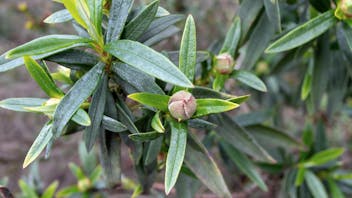Product Overview
Labdanum Absolute, Clear – 10% is extremely tenacious and has a powerful, deep, rich, sweet balsamic aroma with a faint herbaceous nuance and a persistent ambergris-like undertone. It is used extensively in perfumery for its excellent fixative value and to impart a rich, suave sweetness and naturalness. Perfumer Alec Lawless opined that "If you pick only one balsamic fixative, this has got to be it."[1] It appears "among the main constituents of 33% of all modern quality perfumes and 20% of all quality fragrances for men"[2] and is an essential component in chypre blends.[3] Please Note: This product is diluted for ease of use and contains 10% Labdanum Absolute - Clear in 90% Organic Sunflower Oil.
Labdanum oleoresin is an exudation of Cistus ladanifer, a beautiful flowering shrub native to the Mediterranean region. Labdanum Absolute is obtained by solvent extraction of the resinous leaves and twigs – a world away from steam distilled Cistus essential oil. The increasing influence of changing climate conditions, such as chilly early spring weather coupled with soaring high summer temperatures, contribute to lower yields, reduced chemical complexity and rising costs. Thankfully, both Labdanum and Cistus extractions result in intense, powerful aromas that are typically used in very low percentages.
One historically interesting revelation about Cistus is that of ancient folks combing the sticky Labdanum resin from the beards and thighs of browsing goats![4] Later, those 'combs' – more like small rakes – were made of leather, which were then scraped of the resin for later distillation. One wonders if the ‘leather notes’ in historical descriptions of the Cistus/Labdanum aroma is a relic of that early practice.
This product is diluted for ease of use and contains 10% Labdanum Absolute in 90% Organic Sunflower Oil. For the pure and undiluted version of this oil, see the high-quality Labdanum Absolute – Clear– Clear that we offer.
1 Lawless, Alec. Artisan Perfumery or Being Led by the Nose, 2009, p. 70.
2 Groom, Nigel. The New Perfume Handbook, 2nd ed., 1997, p. 178.
3 Lawless, Alec. Artisan Perfumery or Being Led by the Nose, 2009, p. 70.
4 Rhind, William. A History of the Vegetable Kingdom, 1868, p. 560.



